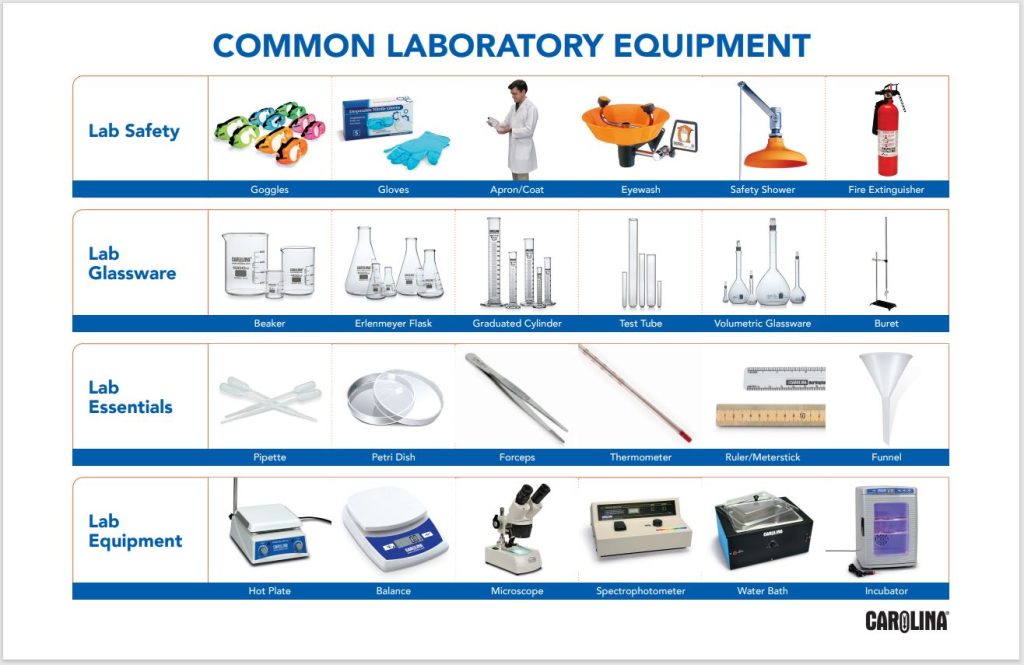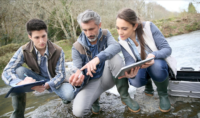Returning to school after an absence, whether a summer break, a semester change, or even a disaster is a cause for uncertainty–but knowing for certain that you’re returning to a safe lab setting eases concern for all.
Have you seen any episodes of National Geographic’s When Humans Disappear? The introductory clip on YouTube® is a wonderful phenomenon video–environmental science and biology students cheer Mother Nature at work, and chemistry and physics students see the laws of thermodynamics played out on a large scale.
What does this have to do with you and your classroom? You and your students left the classroom for a time, but Mother Nature and physics laws did not. When you return, you need to inspect myriad items to ensure a safe classroom. Thermodynamics tells us that a constant input of energy is required to combat randomness and chaos, so expending the energy to complete a thorough safety check before students come back to the classroom will help to guarantee a safe return.

Power Check
Batteries of all types and sizes are used to power many of your lab devices, from balances to clocks to calculators. Here’s a list of items that are easy to forget to check . . .
- Balances
- Calculators
- Clocks, pencil sharpeners, and wireless devices (mouses, remote controls, and pointers)
- Digital thermometers
- Flashlights (white lite, UV, and IR)
- Physics meters (voltmeters, multimeters, etc.)
- Pen meters (all types)
- Probeware
- Timers
To check the batteries, remove the battery cover, examine the battery and terminals. Rotate the batteries if they are A-type batteries. If there is any sign of corrosion, put on gloves and carefully remove the battery. Place corroded batteries in a resealable bag, and store with chemical waste for pickup by the designated authority. Battery terminals may be cleaned with a cotton swab and white vinegar. Do not replace batteries until the housing is dry. Any dead batteries can be recycled.
Charge any devices that have been sitting unused, like laptops, tablets, probeware, and microscope accessories.
Chemical Supply and Storage Check
Check your classroom and storage rooms for chemicals that can no longer be safely used.
- Every chemical container should have a “received date” or “solution prepared date” on the bottle or label. Check the safety data sheet (SDS) for information on the stability of the chemical.
- Common acids, like nitric and sulfuric, discolor with age and should be disposed of when they discolor.
- Buffers are particularly age sensitive and should be tested regularly.
- Examine the lids of chemical containers also. If there are signs of residue buildup around the lid, the chemical may need to be disposed of.
- Test papers have expiration dates also and may not register results accurately after they expire.
Chemicals have varying ranges of acceptable storage temperature and humidity. These ranges may have been exceeded during the building shutdown.
Most chemical handling and safety questions can be answered on the chemical safety data sheet. Many local fire departments are also happy to help you complete a chemical safety and storage inspection. Don’t forget to update your chemical inventory after disposal, and list any chemical that needs to be reordered.
Biology Supply Check
Biology classrooms, like chemistry classrooms, have chemicals that need to be checked for expiration dates. Additionally, several other common supplies need examination as well.
-
Growth media needs to be checked for expiration and the presence of growing organisms if the media was not sealed and sterile. Prepared media in petri dishes or test tubes can dry out and crack rendering them unusable, and they should be replaced. Melt-and-pour media can dry out. If it is pulling away from the side of the bottle, plan on a replacement.
-
Prepared media with antibiotics need to be disposed of; these may not have expiration dates.
-
Seeds can have a shelf life of several years, but if they have been exposed to humid or hot conditions, make plans for a decreased germination rate or order new seeds.
-
Microscopes need to be cleaned and light sources checked, so they are in working order. Check out this helpful microscope care and use mat.
-
Lens paper should be checked for water damage due to high humidity.
-
Preserved specimens should be usable if they have been stored properly at room temperature and out of direct sunlight. Check that specimens in pails are still submerged in preservative. Ensure bagged specimens have remained sealed and have no leaks. For information on dissection safety, storage, and disposal, click here.
Equipment Check
General lab equipment needs a check also.
- Check electrical equipment, connections, and wires.
- Check hot plates for oxidation and chemical residue on the heating surface.
- Clean out lab refrigerators/freezers and dispose of old, opened materials, and check expiration dates of contents.
- Confirm temperatures for refrigerators and freezers.
- Confirm calibration of equipment, such as balances, thermometers, pH meters, etc.
- Confirm that gas lines are operational.
- Check membranes in meters and probeware to ensure they have not dried out or cracked and check the amount of and condition of the storage solution. Calibrate and test the meters (after rehydration if they were dry). In many cases, membranes need to be replaced every 1—2 years, depending on their usage and storage. Check your manual for further information.
- Check the condition of your water baths. Hopefully, they were drained, but if not, clean them according to the manufacturer’s instructions.
- Verify that water baths and incubators hold their temperature.
- Check and replace light bulbs in growth chambers and light banks.
- Clean models and check the labeling.
- Make sure sink drains run freely and are clean.
- Check textbooks and other paper products for mold.
Safety Equipment and PPE Check
This is probably the most critical safety check since safety equipment and PPE are required by regulation for every student and teacher.
- Eyewash: Check water flow and pressure. Clean the basin, nozzle heads, and handle.
- Safety shower: Check water flow and pressure. Clean the shower head and handle. Let the water run into a bucket until it runs clear.
- Fume/exhaust hood: Check the flow rate with a piece of paper or cloth. When the hood is on, the paper or cloth should be drawn to the exhaust outlet. Check and replace the filter if need be.
- Goggles and face shields: Clean and count both. Other folks may have used the science department PPE.
- Goggle sanitizing cabinet and bulb: Check the UV bulb in the goggle cabinet to make sure it is operational and that goggles are still being sanitized properly.
- Chemical spill SOC: Spill SOC should be dry and the outer cover intact.
- Handwashing stations: Restock with soap, paper towels, and hand sanitizer.
- Face masks: Have a ready supply of disposable face masks.
- Gloves: Check gloves for signs of degradation. Your fingers and hand should not perforate the gloves.
- Fire extinguisher and last inspection date: Check that the fire extinguisher is in the correct location and that it has been inspected. If an inspection has not taken place, contact your local fire department or the fire inspector directly.
- First aid kits: Check for expiration dates on any chemicals or other items in the first aid kit. Make sure it is in the proper location.
- Mold growth: Check the interior and exterior of cabinets and drawers, as well as the ceiling and vents, for mold growth. Temperature, humidity, and ventilation may have been different without people in the building.
Do you need safety equipment or supplies? We offer a series of buying guides that can help you make quicker decisions and get orders processed faster. If you need help with specific items, contact us at product@carolina.com. We always have time to talk!




